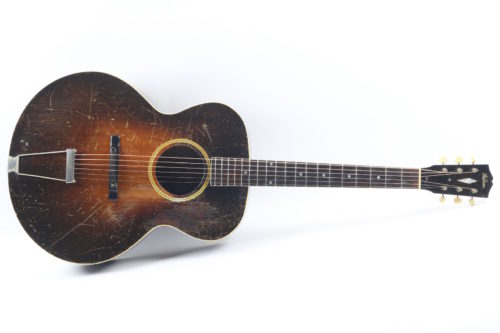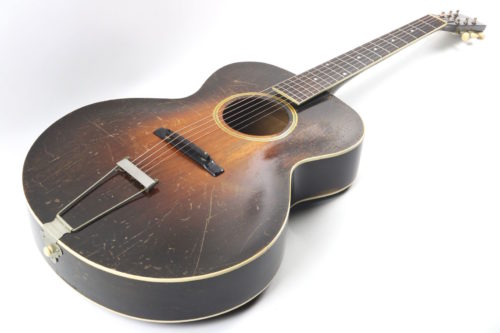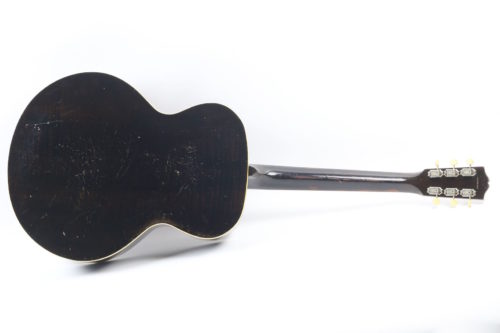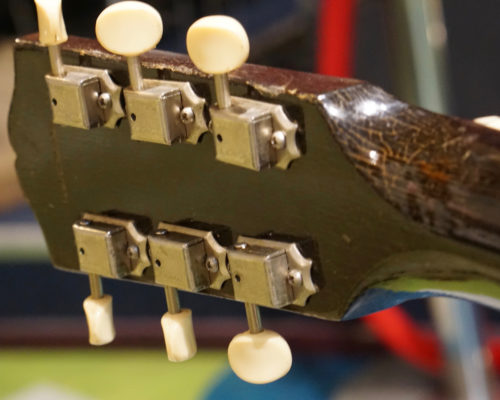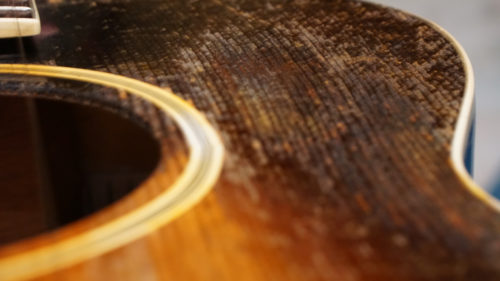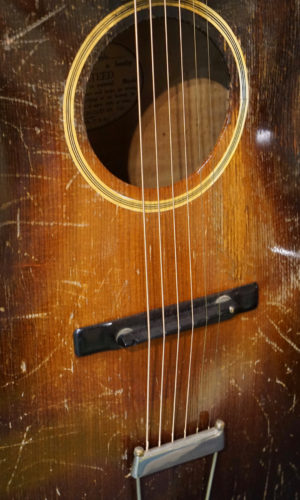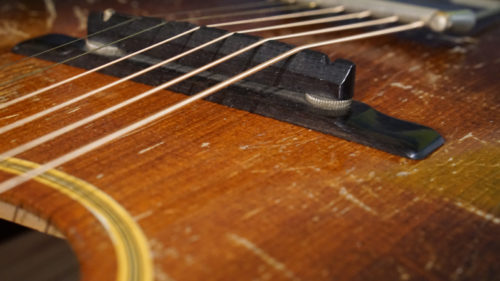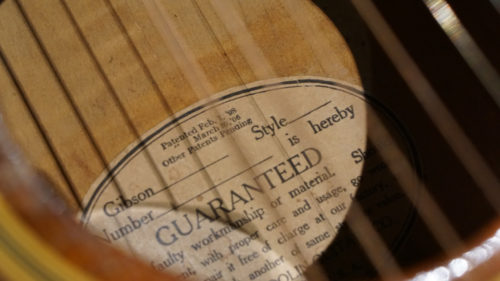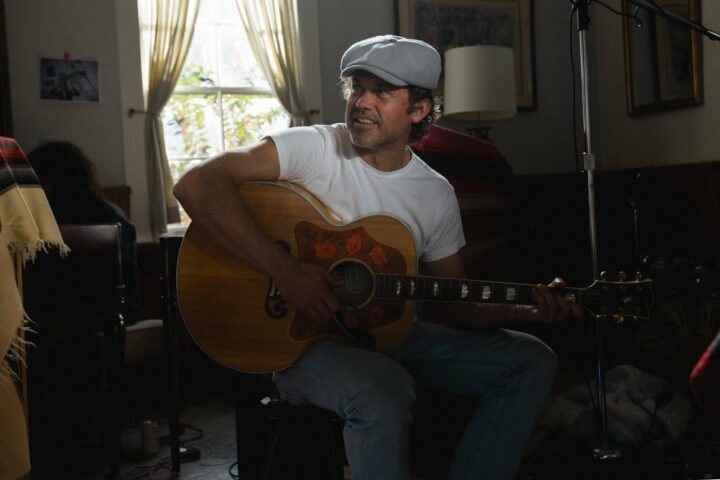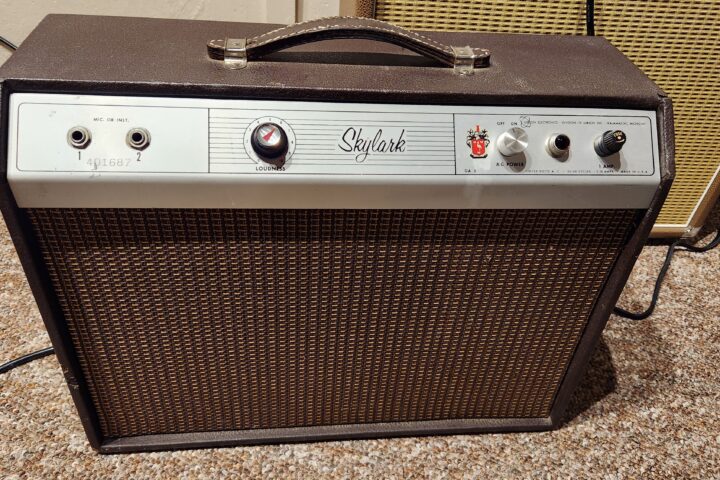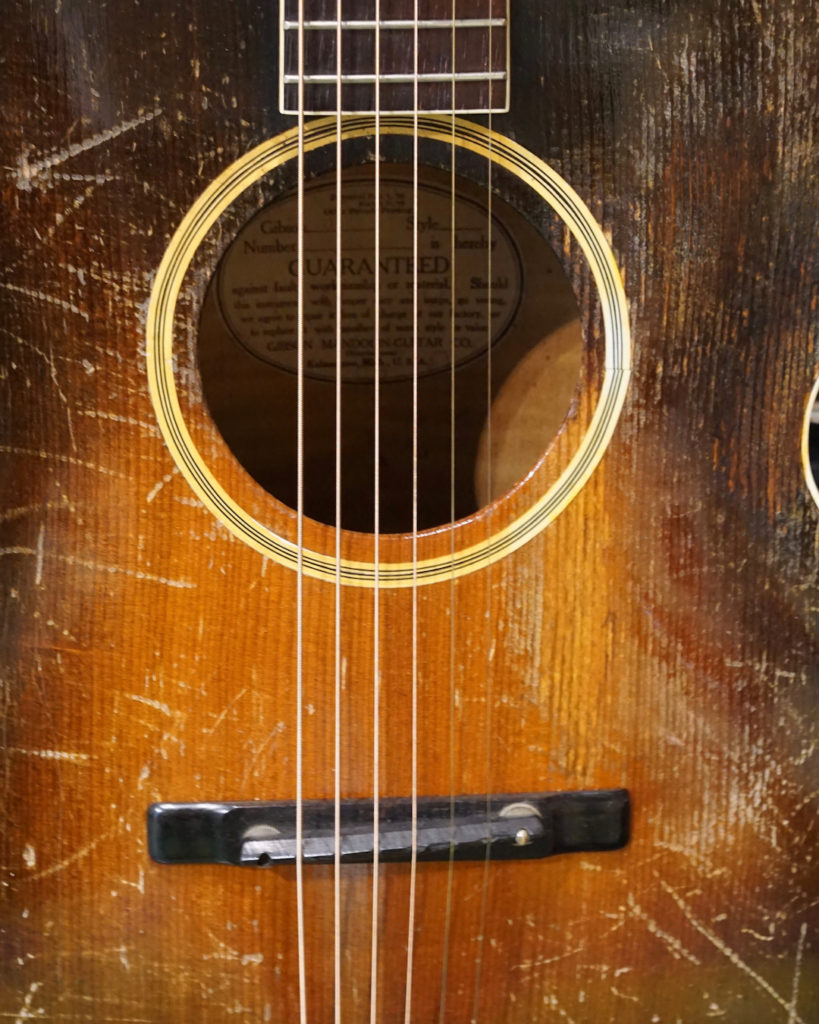
How do you define “character” in a guitar? There are all sorts of things you might point to, and myriad more that you could say help build character, just as it might in a person. What we’re looking at here, today, most definitely has what I call “character,” and it has it to spare. This here is a 1934 Gibson L-4, and it is undeniably beat, but by no means to death. The wear – mostly scratches and minor dings, some finish rubbed off on the neck – is extensive, but seems entirely superficial, with no apparent cracks or other structural issues. If finish checking is your bag, this thing’s got checking in spades, throughout the back and neck, somewhat subtler on the top thanks to the aforementioned extensive wear. In fact, the scratches almost defy logic; clearly somebody played the crap out of this guitar, and it’s not hard to understand why…
You see, this guitar is something of a joy to play. The neck’s big without being huge, with that distinct “V” profile. I’m not a “V” profile guy. I like a chunky “U” profile. Generally, that hump in a “V” digs right into a bad spot at the base of my thumb and I cannot wait to put the guitar down. This particular “V,” however, fit my hand perfectly, all the way up and down the neck. Meanwhile, the 16” body is totally wieldy, with a deep carve to the top. With the round soundhole this thing is absolutely alive, possessing a rich, well-balanced tone that can bark up to your expectations for an archtop but is easy and responsive when played gently. The action sits comfortably in the “medium” range of things, so it’s as easy on the left hand as it is on the right, and the frets play clean all the way up.
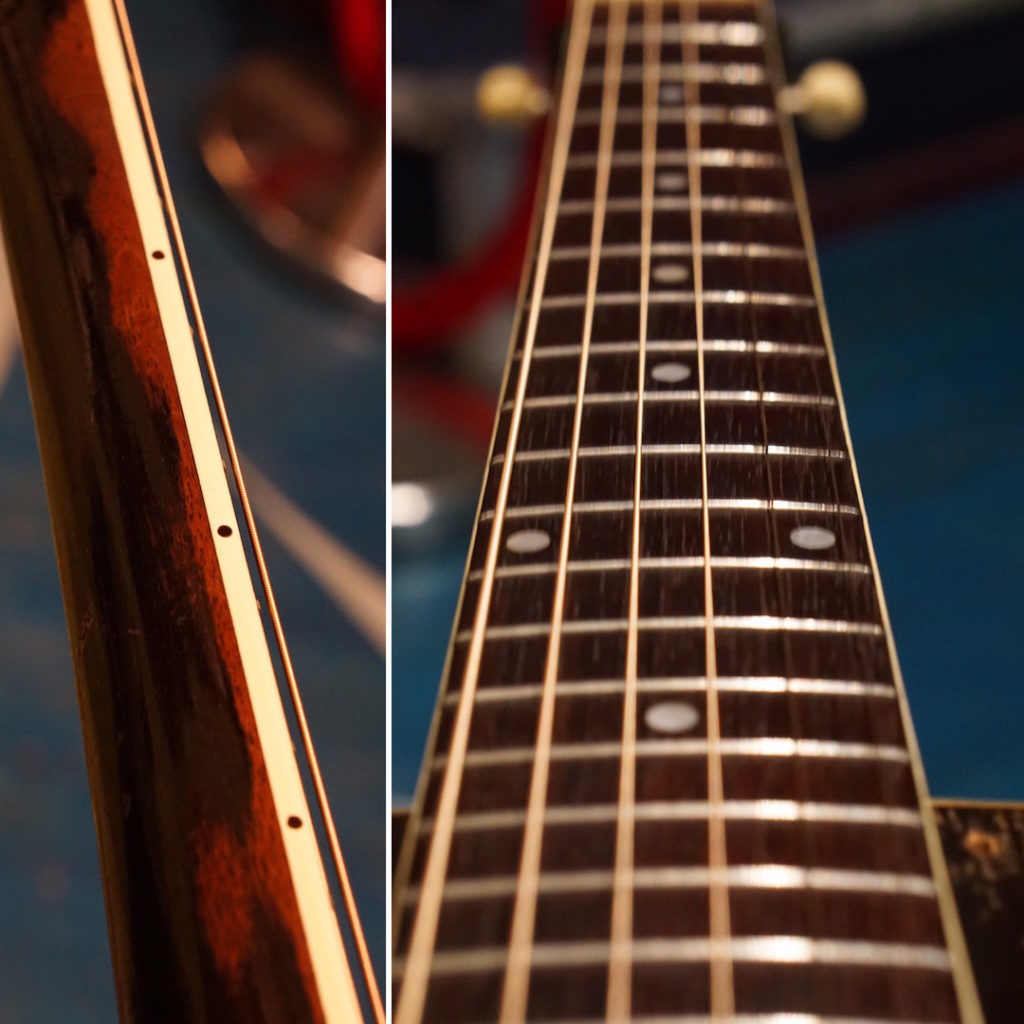
The appointments on this puppy are pretty simple. The binding is single-ply on the body and neck, the rosette Gibson’s standard, simple dots for position-markers and an inlaid script logo and diamond on the headstock (the diamond so plain it seems almost an afterthought). The bridge is ebony, the tailpiece trapeze, and the tuners are ‘60s-era Klusons with plastic buttons – all totally serviceable and appropriate.
Sadly, I didn’t get to spend nearly enough time with this instrument, but I put it through its paces as best I could, bashing out some backbeat rhythm chords, running some single-note lines up and down the neck, fingerpicking some first position basics, probing for the sweet spots with a few chords against open strings and bouncing around the harmonics. Everything I tried made me smile (while simultaneously making me wish I could add 75 years’ worth of playing to the modern 16” oval-hole archtop I have at home). For fans of the unusual, folks who find character in the quirks of a players’ wear and the scars of 80 years of exuberant use, this thing’s a score.
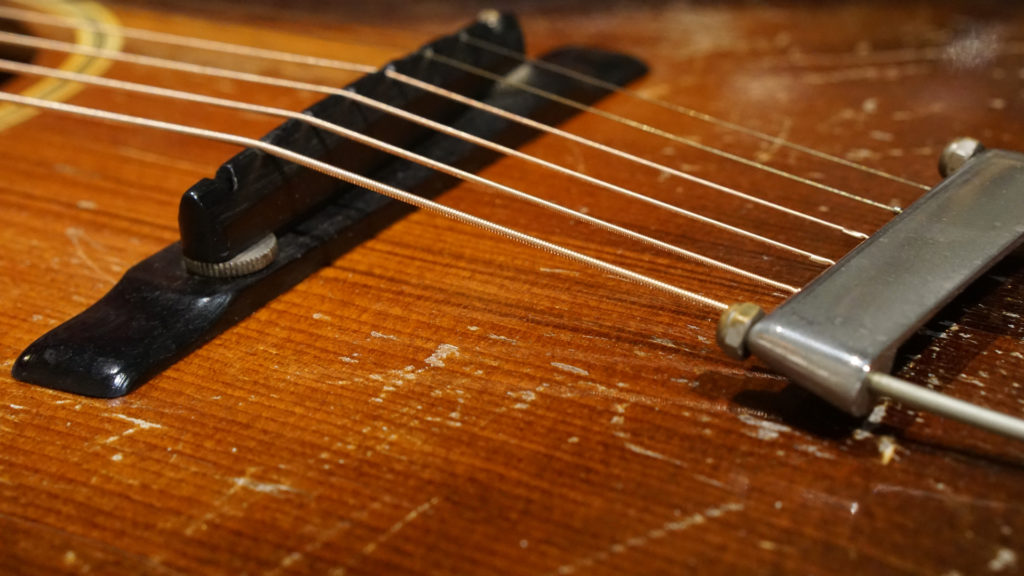
This instrument is available at Emerald City Guitars for $2,995; for more information and additional photos, check out their listing.
